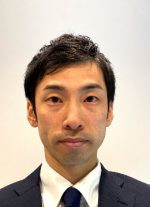Poster title
Combined Cognitive Behavioral Therapy and Auricular Vagus Nerve Stimulation for Insomnia in University Students : A Randomized Controlled Trial
Presentation summary
Co-Authors :
– Hideaki Waki, Acupuncture and Moxibustion, Faculty of Health Care, Teikyo Heisei University, Japan
– Takuya Suzuki, Acupuncture and Moxibustion, Faculty of Health Care, Teikyo Heisei, University, Japan
– Shogo Miyazaki, Acupuncture and Moxibustion, Faculty of Health Care, Teikyo Heisei University, Japan
– Yoichi Minakawa, Acupuncture and Moxibustion, Faculty of Health Care, Teikyo Heisei University, Japan
– Naruto Yoshida College of Sport and Wellness, Rikkyo University, Japan
Background :
Insomnia in university students can impair cognition, mental health, and learning motivation, lowering academic and life quality. Cognitive Behavioral Therapy for Insomnia (CBT-I) is commonly used, butits effects take time. This study aimed to examine the combined effects of CBT-I and transcutaneous auricularvagus nerve stimulation (taVNS), which may act more quickly, on sleep, mental state, and learning motivation.
Methods :
A total of 71 university students with mild insomnia were randomly assigned to either the CBT-I group(n = 35) or the CBT-I + taVNS group (n = 36). A two-week intervention followed by a two-week follow-up wasconducted. The primary outcome was insomnia severity (ISI), and secondary outcomes included daytime sleepiness (ESS), depression (PHQ-9), and learning motivation (UWES-S). taVNS was applied nightly to the auricular points Heart and EX-HN22 at 100 Hz for 15 minutes, while CBT-I was delivered through a web-based program. Statistical analyses used independent t-tests for each time point, with Bonferroni correction applied.
Results :
At the end of the two-week intervention, the CBT-I + taVNS group showed significantly greater improvement in ISI scores compared to the CBT-I group alone (p < 0.01). There were no significant differences between groups after a two-week follow-up or in secondary outcomes.
Conclusion :
The combined use of internet-based CBT-I and taVNS may lead to earlier and more effective improvements in sleep problems among university students. In particular, taVNS may provide complementary value in enhancing the immediate effects of insomnia treatment.
Funding : This work was supported by the Japan Society for the Promotion of Science (JSPS) KAKENHI, Grant Number 22K13819.
Conflict of interest
No

h.waki1988@gmail.com